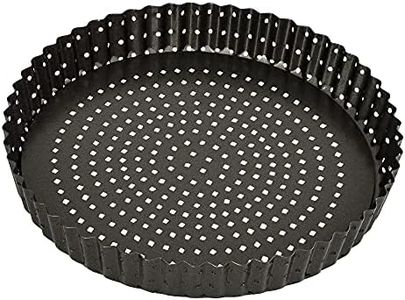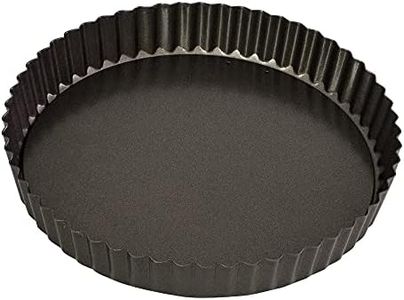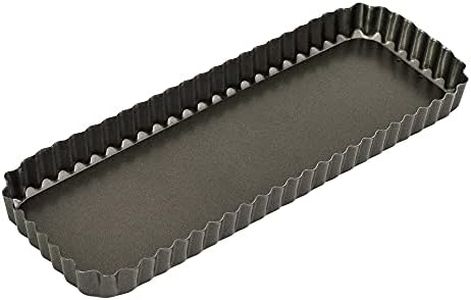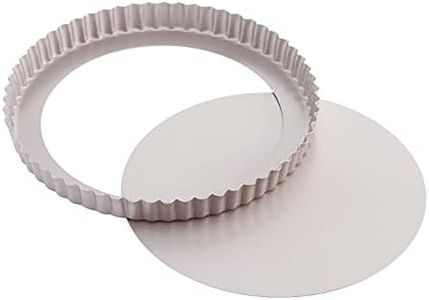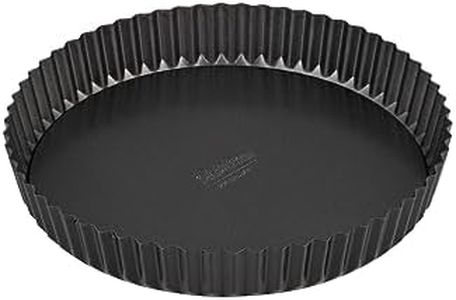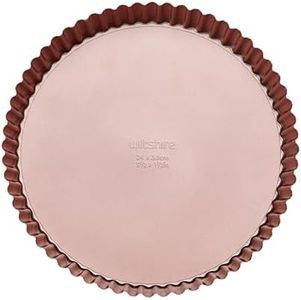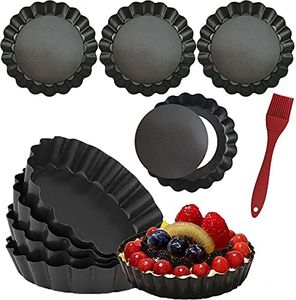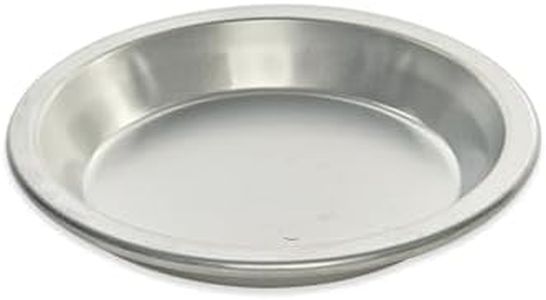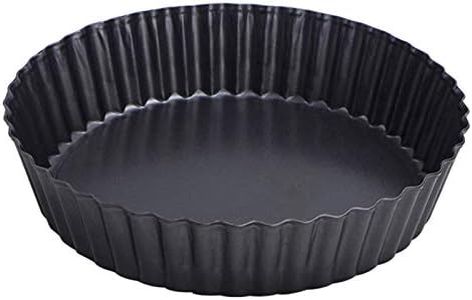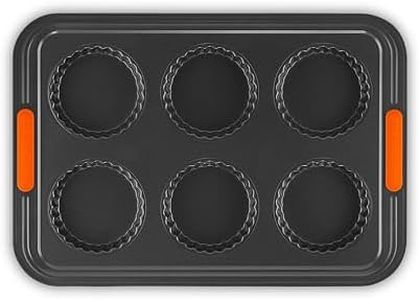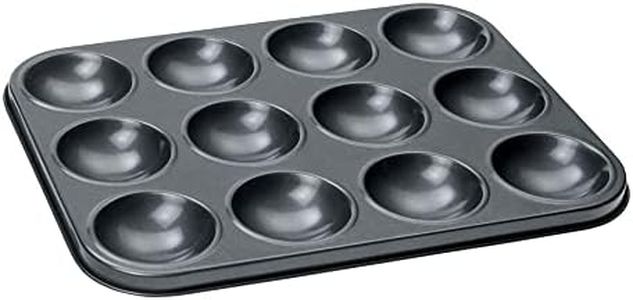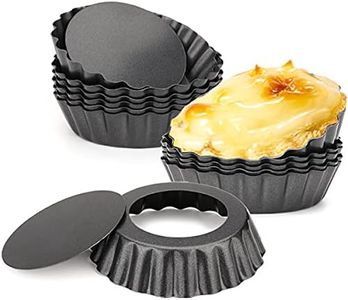We Use CookiesWe use cookies to enhance the security, performance,
functionality and for analytical and promotional activities. By continuing to browse this site you
are agreeing to our privacy policy
10 Best Tart Pans
From leading brands and best sellers available on the web.Buying Guide for the Best Tart Pans
Choosing a tart pan can seem simple, but selecting the right one can really make your baking experience smoother and your results more impressive. Different pans affect the way your tart bakes, how easy it is to remove from the pan, and even how attractive your finished dessert looks. When deciding which tart pan to buy, it's important to pay attention to key features so that you get the best match for your baking needs.MaterialThe material of a tart pan commonly ranges from metals like aluminum and steel to ceramics and silicone. This matters because it can affect how evenly your tart cooks and how easy it is to remove from the pan. Metal pans, especially those with non-stick coatings, heat up quickly and release the tart more easily, making them good for beginners or those who bake frequently. Ceramic pans heat more slowly and retain heat longer, which is better for serving straight from the oven but may require careful handling. Silicone pans are flexible so tarts come out easily, but they might not brown crusts as well. If you want crisp, golden crusts, metal might be best; if pretty presentation is your goal, ceramics are great. Consider your baking style—if you care most about ease or appearance, pick accordingly.
Size and ShapeTart pans come in a variety of sizes and shapes, commonly ranging from small individual pans (about 4 inches) to larger family-sized pans (up to 12 inches or more), and from round to rectangular or even heart-shaped. Size affects the amount of dough and filling you’ll need, as well as how many people the tart serves. Choose the size based on the type of tarts you want to make and the number of servings you need; small pans are great for single servings or tasting events, while larger pans are more suitable for group desserts. The shape is more about presentation and personal preference, so consider what looks most appealing to you and suits your usual recipes.
Removable BottomMany tart pans offer a removable bottom, which means the base of the pan can be pushed up and out of the rim. This feature is helpful because it makes it much easier to remove the finished tart without damaging its delicate edges, keeping your tart looking neat and professional. If presentation matters to you or you want to minimize struggles getting your tart out of the pan, a removable bottom is a top choice. However, fixed-bottom pans can be more affordable and slightly leak-proof for runny fillings, so think about your typical tart recipes and your priorities in ease versus potential leaks.
Non-Stick CoatingA non-stick coating is a layer on the surface of some tart pans that prevents food from sticking. This makes it easier to remove the tart and also makes cleaning up simpler. Non-stick pans are a good option for beginners or for those making tarts with sticky fillings. However, the coating can wear off over time if not handled carefully, so it's best for you if you’re looking for convenience and don’t mind replacing your pan eventually or are willing to follow proper care instructions.
Pan DepthTart pans can be shallow (about 1 inch deep) or deeper (up to 2 inches or more). The depth relates to the kind of tart you’ll make—shallow pans are ideal for traditional fruit tarts, quiches, or any tart with a thin layer of filling, while deeper pans are best for recipes that require more substantial fillings or custards. If you like classic fruit tarts or flans, go for a shallow pan; for hearty quiches or thicker desserts, a deeper pan may serve you better.

